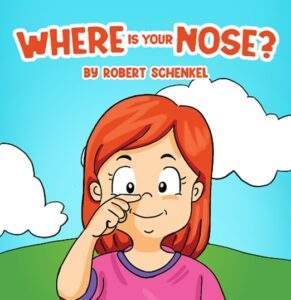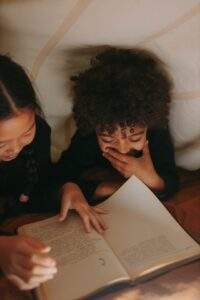Hey there, curious minds! Have you ever realized how certain stories from our childhood share this enchanting thread that ties them together? Today, let’s delve into the universal themes in childhood literature that keep us coming back for more. We’ll uncover the shared marvels that turn these books into timeless companions, appealing to kids and grown-ups alike. Ready to unravel the secrets? Let’s jump in!
5 Common Themes in Children’s Literature Kids Love
When discovering the common themes in children’s literature, the classics always serve as a great starting point. However, many of the latest books also create buzz thanks to great illustrations, catchy rhymes, and an overall fun time. We will discuss a mix of both to help you get started.
1. The Wonder of Discovery
Children’s literature often serves as a gateway to a world of discovery within the story and within themselves. The theme of exploration and curiosity runs like a golden thread through classics like “Alice’s Adventures in Wonderland” and “Curious George.” These stories transport young readers to realms where the ordinary becomes extraordinary, and the joy of discovery is celebrated.
Whether it’s uncovering hidden doorways or unraveling the mysteries of the natural world, children’s literature encourages a sense of wonder that fosters a lifelong love of learning. Such tales not only entertain but also instill in young minds the belief that there is magic in understanding and exploring the world around them.
Along similar lines, the theme of discovery is also evident when non-fiction books help children explore what’s around them. For instance, “Where Is Your Nose?” by Robert Schenkel is a fun and engaging book that teaches children about body parts. Young minds can carry out the actions described in the book while making the most of the colorful illustrations.

“Where Is Your Nose?” helps children discover their body parts
2. Friendship and Belonging
One of the most common themes in children’s literature is the power of friendship and the quest for a sense of belonging. From Winnie the Pooh’s adventures in the Hundred Acre Wood to the heartwarming tales of “Charlotte’s Web,” these stories teach children the importance of connection and the comfort that true friendships bring.
Through the diverse characters that populate these tales, young readers learn valuable lessons about empathy, acceptance, and the beauty of embracing differences. These narratives serve as gentle guides, helping children navigate the complexities of relationships and understand the richness diversity brings.
3. Overcoming Challenges and Resilience
Children’s literature is a treasure trove of stories that depict characters facing challenges head-on and emerging victorious. Whether it’s the underdog’s triumph in “The Little Engine That Could” or the resilience of a spirited fish in “Rainbow Fish,” these tales instill in children the belief that challenges are growth opportunities.
By witnessing characters overcome obstacles, young readers develop a sense of resilience and learn that setbacks are not the end of the journey but stepping stones to success. These narratives sow the seeds of determination, encouraging children to face challenges with courage and perseverance.
4. The Magic of Imagination
Imagination is a powerful force that propels children’s literature to unparalleled heights. That’s why it’s also one of the most common themes in children’s literature, as various famous books depict it. Stories like “Where the Wild Things Are” and “Peter Pan” transport readers to realms where the boundaries of reality blur, and the magic of imagination reigns supreme.
Through these tales, children learn that the limits of their imagination are boundless. The theme of imagination encourages creative thinking, problem-solving, and a deep appreciation for the fantastical. It’s a reminder that, even in the mundane, a world of possibilities is waiting to be explored through the lens of a vivid imagination.
5. Lessons of Morality and Kindness
Many children’s stories are imbued with timeless moral lessons that transcend generations. Fables like “The Tortoise and the Hare” and “The Boy Who Cried Wolf” use engaging narratives to impart essential values of honesty, patience, and the consequences of one’s actions.
These tales act as moral compasses, guiding young readers through the complexities of right and wrong. By weaving moral lessons into captivating stories, children’s literature becomes a powerful tool for instilling ethical values that lay the foundation for a compassionate and empathetic worldview.

Encourage children to explore beyond their imagination through literature
Add “Where Is Your Nose?” to Your Shelves!
The common themes in children’s literature create a mosaic of experiences that shape the minds and hearts of young readers. Through wonder, friendship, resilience, imagination, and morality, children’s stories not only entertain but also serve as timeless companions in the journey of growing up.
As we navigate the pages of these enchanting tales, let us remember the profound impact they have on shaping the character and worldview of the next generation. So, the next time you’re on a literary adventure with a young reader, take a moment to appreciate how the common themes through the pages connect us across time and generations.
Encourage your child’s thirst for discovery with “Where Is Your Nose?” by Robert Schenkel. This captivating book explores the wonders of the human body and captures the essence of curiosity and imagination. Order your copy today and gift a young reader the joy of exploring the magical world within and around them. Happy reading!

